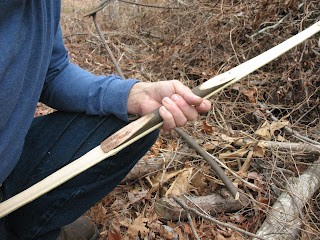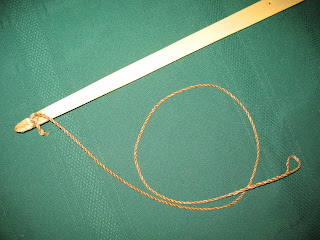Pokeweed (Phytolacca americana) goes by many names. Pokeweed, Poke Salat, Poke Salad, and Pokeberry are some of the most common. Poke is a spring green that is native to North America. Poke is one of those plants that can be dangerous if it is prepared wrong. Never eat Poke Greens raw, and never, ever eat the berries, stems, or roots at all, raw or cooked.
Poke will sprout up in the early spring in old pastures, fields, burned over areas, recently logged areas, or other areas where the soil has been disturbed. The season for gathering Pokeweed is very short. When it gets over a couple of feet tall it has too much saponin in it, and it will make you sick no matter how you prepare it. If you find small Pokeweeds later in the spring, don't pick them. They will be too high in saponins even though they are still small. Pictured below: Young poke in very early spring

So, now that I have scared you to death; let's talk about how to gather and prepare Pokeweed. Refer to the pictures above to identify Pokeweed. It has a pretty unique appearance, and I don't personally know of any other plant around here that looks even remotely like Poke. It has shiny oval shaped leaves that are smooth on the edges and about four inches wide by six to ten inches long. The leaves are alternate, which is to say that they don't grow exactly opposite on each side of the stalk; but rather there will be a leaf on one side of the stalk and then the leaf on the other side of the stalk will be a little higher or lower. After you have located a good Pokeweed, take a look at it. It should be all green. If the stem has started turning purple, that means that saponins are starting to build up in the plant and you don't want it. If the plant looks good you can pull off the leaves. I usually do not pull any leaves that are over eight inches long. Pictured below: This poke is ready to pick

Chop the leaves up into pieces one to two inches long, rinse in cold water and place in a pot filled with cold water. Wash your hands and the chopping knife with soap and water. Bring the pot to a full boil, and boil the Poke for about ten minutes. Pour off the Poke and water through a strainer, rinse the Poke. Rinse out the cook pot and refill with cold water. Place the Poke back in the pot, bring to a boil, and boil for another ten minutes. Strain, and rinse the Poke again. Rinse out the cook pot, refill with cold water, and boil the Poke for another ten minutes.Your Poke is now ready to eat
Poke tastes great when cooked with a little fatback and pepper, or you can cook it with just salt and pepper. But the absolute best is poke salit with cornbread dumplings. In my next post I’ll tell you how to make cornbread dumplings to go with poke, collards, or any other green.














































